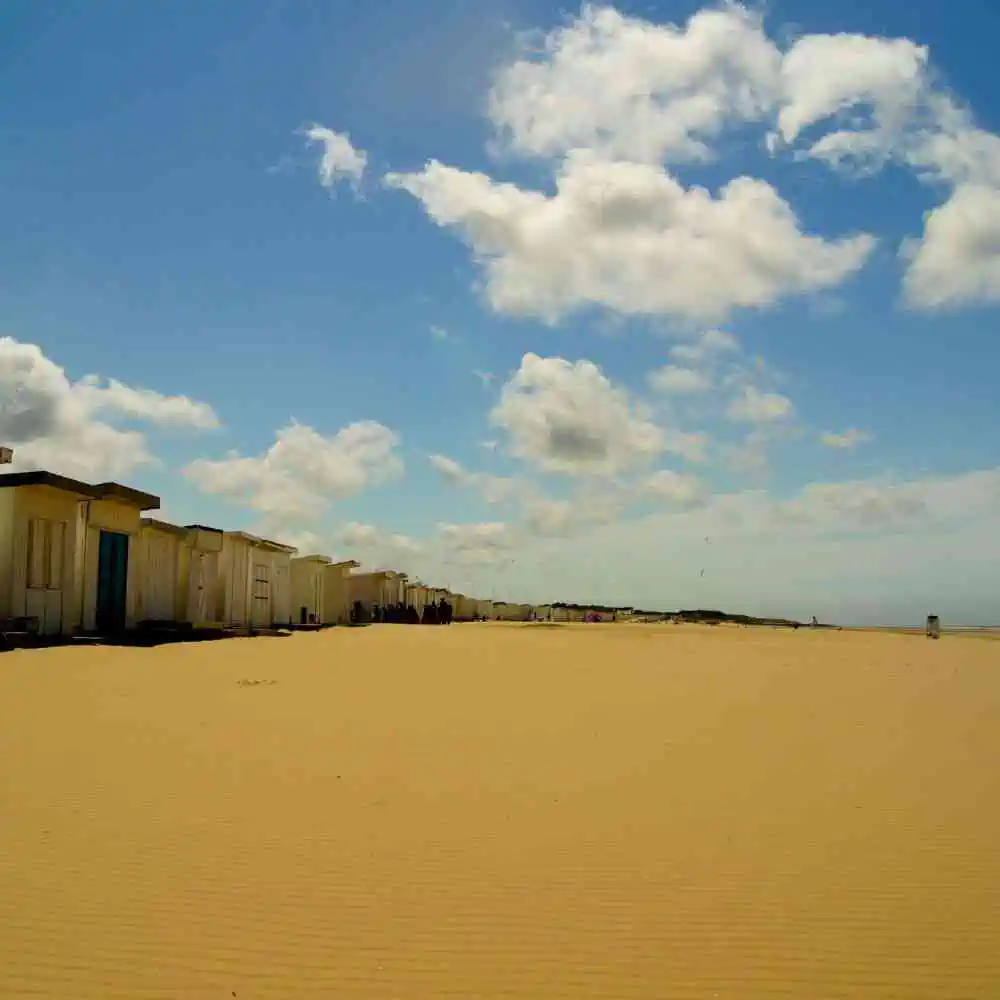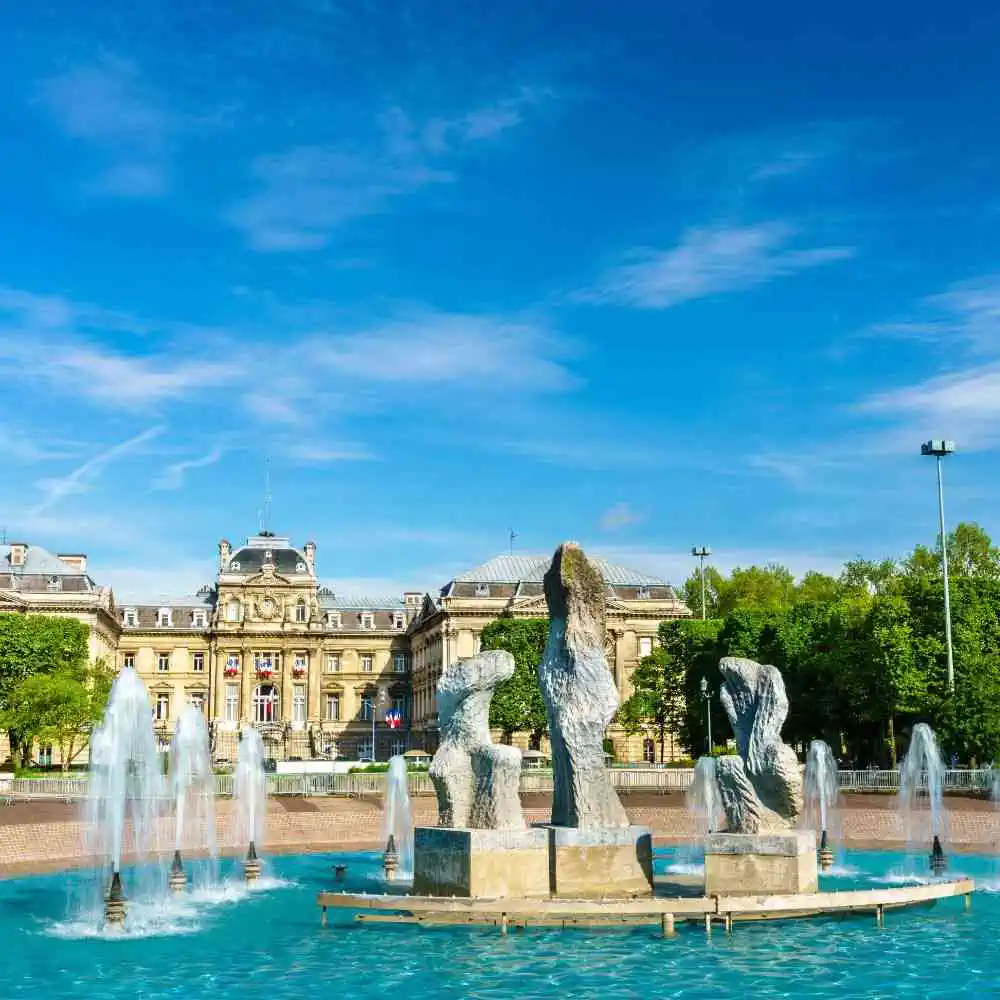Partirás desde Lille, ubicado justo en el centro de la ciudad de Lille, y disfrutarás del hermoso paisaje mientras llegas a Calais Ville, también situada en el corazón de Calais Ville.
Trenes de Lille a Calais VilleDesde $ 17.00
Trenes de Lille a Calais Ville
Viaje en tren de Lille - Calais Ville
Traveling from Lille to Calais is a great way to roam the beautiful countryside of Northern France. Passengers can enjoy the landscape of both urban and rural villages as they make their way between the two cities. Although the trip is relatively short, there are plenty of things to do in both Lille and Calais along the way.
The train journey from Lille to Calais typically takes about an hour and a half and is approximately 80 kilometers or 50 miles. Popular stops along the way include Tourcoing, Hazebrouck, Saint-Omer, Ardres, and Fréthun. As you pass through these towns, be sure to take in the stunning views and iconic buildings such as the Fréthun Train Station and the Hazebrouck Rail bridge.
In addition to these attractions, visitors may also wish to explore the various cafes and restaurants located in the major train stops. These stops typically feature a variety of delicious local dishes, ranging from traditional French fare to a variety of international cuisines.
One of the most iconic features of traveling by rail in this part of France is the unique view of the countryside. From the windows of the train, you can observe lovely farms, pristine lakes, and lush forests along the way. This makes for an awe-inspiring journey that can be enjoyed while you relax in the comfort of a train car.
When arriving in Calais, visitors are immediately greeted by the impressive Pas-de-Calais monument. This monument is a reminder of the battles of World War I and serves as a poignant reminder of the past.
All in all, traveling from Lille to Calais by train is a great way to explore the countryside and urban areas of Northern France. With its beautiful scenery, unique attractions, and delicious eateries, this journey is sure to be both memorable and enjoyable. Bon voyage!

Compra billetes de tren de Lille a Calais Ville
Viajar en tren desde Lille hasta Calais Ville es un viaje fácil y cómodo. RailClick es la mejor manera de viajar por Europa en tren.
Lille: Explora la Ciudad
¿Alguna vez te has preguntado cómo sería explorar una ciudad donde la modernidad y la historia se entrelazan de manera única? Lille, situada en el corazón de Francia, es ese lugar. Con raíces que se hunden profundamente en la historia europea, Lille es un destino imprescindible para los amantes de la arquitectura y la gastronomía. A continuación, te presento una lista de lugares y manjares que no puedes perderte.
La Grande Place: El corazón palpitante de Lille, rodeado de impresionantes edificios barrocos. Es el punto de inicio perfecto para sentir el pulso de la ciudad.
Vieille Bourse: Este mercado de libros usado, ubicado entre la Grande Place y la Place du Théâtre, es un laberinto de tesoros literarios en un edificio renacentista flamenco.
La Citadelle: Construida por Vauban en el siglo XVII, esta imponente fortaleza es una obra maestra de la estrategia militar de su tiempo. Ahora, es un lugar perfecto para pasear y disfrutar de la naturaleza.
Palais des Beaux-Arts: Uno de los museos más grandes y prestigiosos de Francia, alberga colecciones de arte europeo que datan del siglo XV hasta el siglo XX.
Maison Natale de Charles de Gaulle: Para los aficionados a la historia, esta es la casa natal del líder francés, convertida en museo que relata su vida y obra.
Le Prieuré de la Visitation: Un oasis de calma en medio de la ciudad, este monasterio es un ejemplo sublime de arquitectura religiosa francesa.
Rue de Bethune: La calle comercial más animada de Lille, ideal para quienes buscan moda francesa y recuerdos.
En cuanto a la gastronomía, no dejes de probar el potjevleesch, una gelatina de carne, o el famoso Welsh, un plato de queso fundido sobre pan con mostaza, acompañado de una cerveza local. Lille es una ciudad para caminarla, sentir su ambiente y dejarse sorprender por sus rincones llenos de historia y sabor. No importa por dónde empieces, cada paso te llevará a descubrir algo inolvidable.

Calais Ville: Explora la Ciudad
Calais is the capital of Pas-de-Calais in the Hauts-de-France region of France. The city is a major port in Northern France, situated on the coast of the English Channel. Calais has a rich cultural and architectural heritage, as well as interesting gastronomy. Whether you're looking for a historical adventure or a foodie experience, Calais proves to be a great destination for a short getaway. Check out this list of must-see sites to maximize your trip to Calais.
Parc Naturel Régional des Caps et Marais d'Opale: This region is composed of both marshes and cliffs, making for a unique landscape. Explore the numerous walking paths through the nature reserve, and take a boat tour to discover the migratory birds that flock here. Entrance fee is €7.50.
Tour du Guet: This medieval watchtower is the last of its kind still standing in Calais. On a clear day you can see England from the tower. Admission is free.
The Calais Hotel de Ville: This 17th century masterpiece by architect Jean de Fouquet is a must-see. Go during the day to admire the chapel and the courtyard before heading out to explore the rest of the city.
The Calais Beffroi: This bell tower from the 13th century is a symbol of Calais. It stands more than 97 meters tall and is visible from many parts of the city. Entrance fee is €4.
Musée des Beaux-Arts et de la Dentelle: This museum will guide you through the history of Calais and its art from the Middle Ages to present day. You can also learn about the local lace-making traditions that the city is famous for. Admission is free.
La Croix-Rouge: This 19th century museum offers a great overview of the region’s history, art, and culture. Admission is €5.
Cuisine of Calais: While in Calais don’t forget to try their traditional dishes, from marinated sardines to maroilles cheese. And you can’t leave without tasting the world-famous beer, Brun Lefebvre.
In conclusion, Calais is a hidden gem for those looking for culture and history, while also offering the chance to enjoy its rich gastronomic tradition. Whether you're visiting for the day or the weekend, there are plenty of activities for every type of traveller.

Lille: Estaciones Principales
En la vibrante ciudad de Lille, en el corazón de Francia, la estación Lille Europe sobresale como la principal puerta de acceso ferroviario. Aunque Lille cuenta con otra estación importante, Lille Flandres, la Lille Europe es la más destacada, especialmente para viajes internacionales gracias a sus conexiones con ciudades clave europeas. Ambas estaciones facilitan la movilidad dentro y fuera de Lille, siendo esenciales para explorar otras partes de Francia y Europa.
La estación Lille Europe se encuentra en la Place de la Gare, en el núcleo de la ciudad, ofreciendo una ubicación privilegiada para los viajeros. Funciona todos los días, aunque es recomendable verificar los horarios específicos para cada servicio. Para consultas, los viajeros pueden contactar al número de teléfono proporcionado por la estación. Entre los servicios más valorados, se encuentra la consigna de equipajes, que permite a los visitantes explorar Lille con mayor comodidad y libertad, sin la carga de sus pertenencias.
- Lille Europe
- Lila
- Croix-l’Allumette
Calais Ville: Estaciones Principales
Calais is a city of the French department of Pas-de-Calais in northern France. The city has an important train station, Gare de Calais, that connects it with other big cities in France and other countries. There is also a smaller station, Gare de Calais-Fréthun, which is served by local services.
The address of Gare de Calais is Place d'Armes, 62100 Calais. It is open everyday from 6am to 11:30pm. The best way to find out more is to contact their information desk at 03 21 19 19 30. The station also provides luggage storage services.
- Calais Ville
- Calais Frethun
Lille - Calais Ville: Consigue las mejores Ofertas
Reserva por adelantado:
Al igual que con las tarifas aéreas, los precios de los boletos de tren tienden a aumentar a medida que se acerca la fecha de salida. Reservar semanas o incluso meses de anticipación puede ahorrarle una cantidad significativa. Viaje durante las horas de menor actividad:
Evite viajar durante las horas pico, como las mañanas y las noches de los días laborables. Opta por los viajes de mediodía, tarde en la noche o de mitad de semana cuando hay menos demanda.
Los trenes expresos o de alta velocidad pueden ahorrar tiempo, pero a menudo son más caros. Optar por servicios regionales o lentos puede reducir su tarifa.
Busque acuerdos y promociones especiales:
Los operadores de trenes ocasionalmente tienen promociones o ofertas especiales, especialmente durante las temporadas fuera de pico. Vale la pena inscribirse en boletines. Además, a veces hay descuentos en boletos de grupo o devolución, así que considere estas opciones si se ajustan a sus planes de viaje.
- Contáctanos


